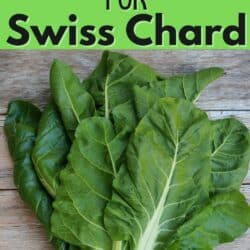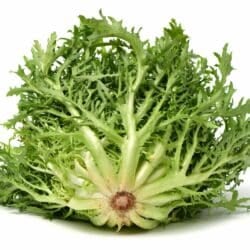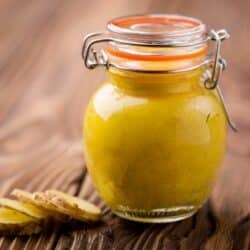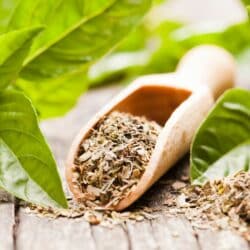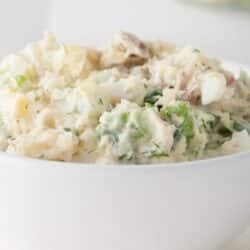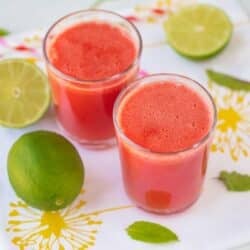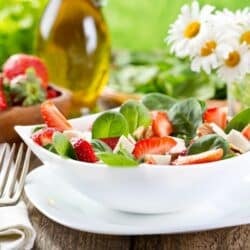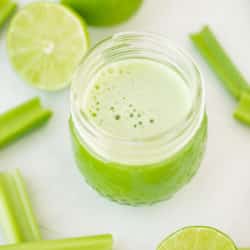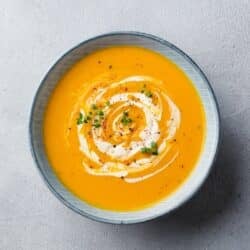9 Best Substitutes for Swiss Chard
Swiss chard is a dark leafy green vegetable that can be used in a variety of dishes, including soups and stews. But what happens if you can’t find it at the store? Here are the best substitutes for Swiss chard including kale, collard greens, spinach, beet greens, bok choy, green cabbage, Napa cabbage, mustard greens, and arugula.
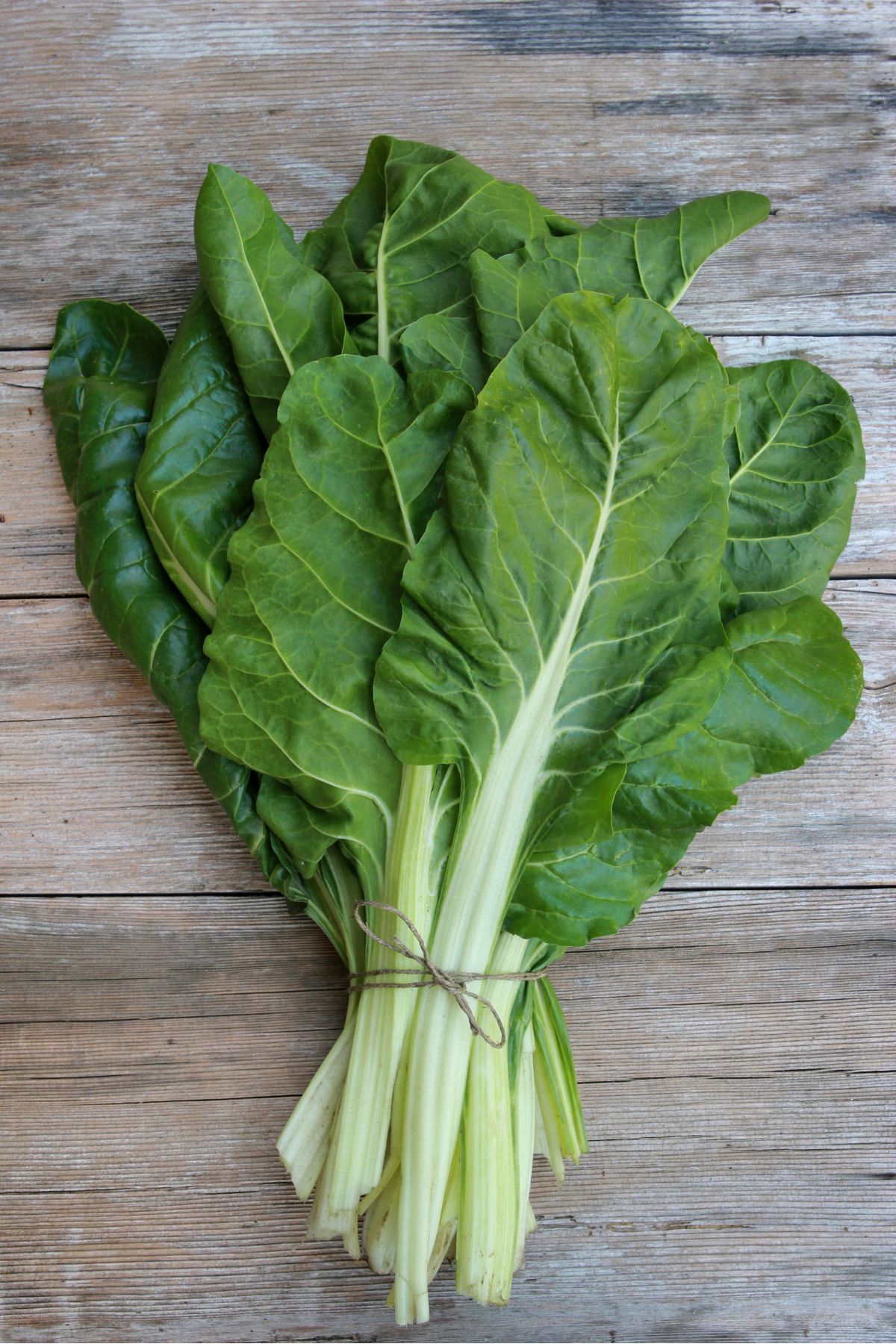
Overview of Swiss Chard
Swiss chard is a leafy green vegetable that is closely related to spinach and beet greens. It is a good source of vitamin A, vitamin C, and vitamin K, as well as magnesium, potassium, and iron. It has so many health benefits!
Swiss chard can be eaten cooked or raw, and its mild, slightly bitter flavor pairs well with other ingredients. The dark green leaves have a crispy texture and a slightly earthy flavor. When choosing Swiss chard, look for brightly colored leaves with firm stems.
There are a few types of chard including regular green chard with green stems and rainbow chard where the stems are very colorful.
Swiss chard is best stored in the refrigerator, where it will keep for up to several days.
To prep Swiss chard for cooking, simply wash the leaves and remove the tough stem (although the stems are also edible). Swiss chard can then be used in a variety of recipes, from soups and stews to salads and sautés.
A great way to prepare it is to simply sauté it in a little olive oil for a great side dish. It’s also excellent when stirred into pasta dishes.
Best Swiss Chard Substitutes
If you need Swiss Chard for a recipe but can’t find it at the store, here are some of the best substitutes.
1. Kale
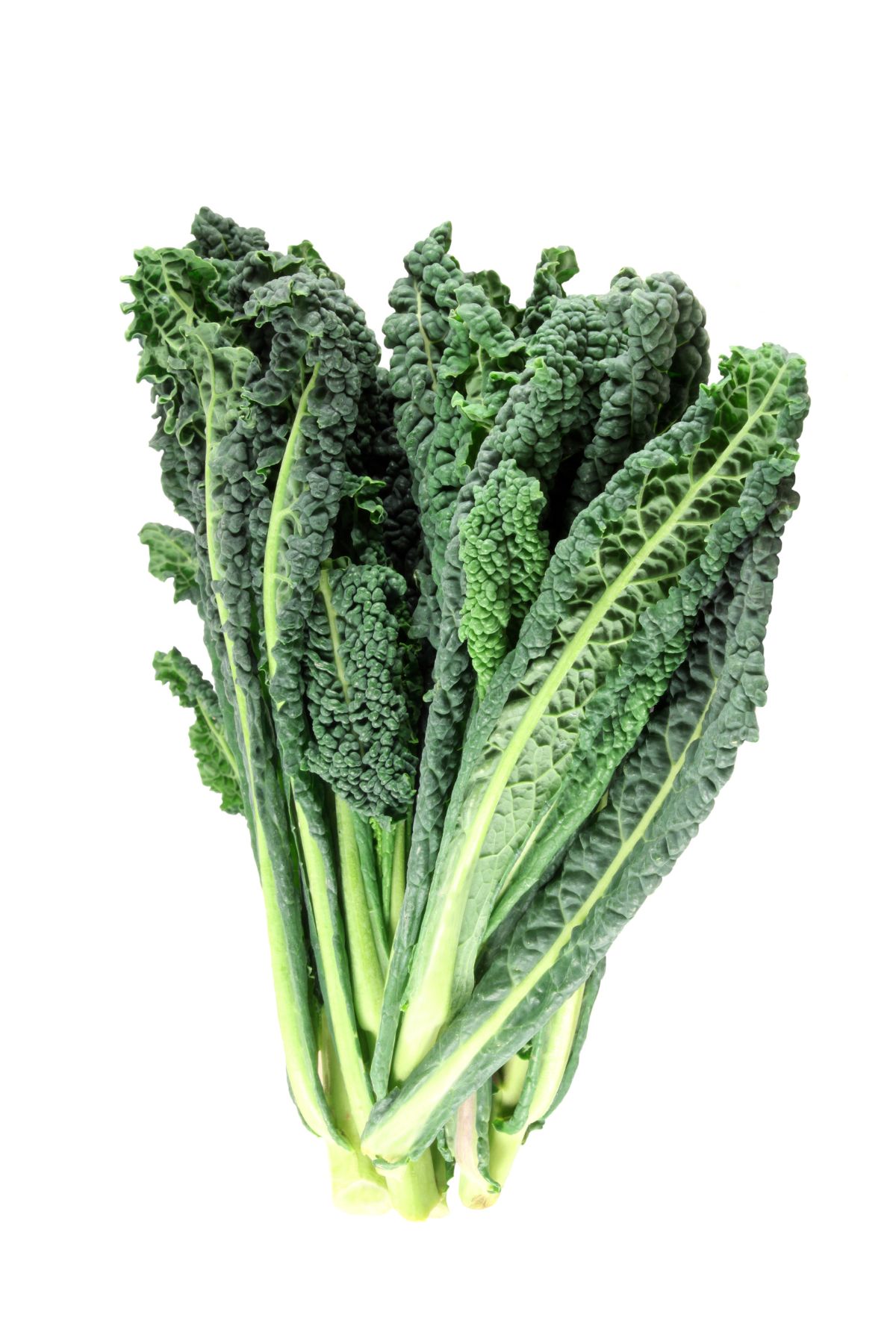
Kale is a leafy green vegetable that is packed with nutrients. It is a good source of vitamins A, C, and K, and fiber. Kale can be eaten raw or cooked and is considered one of the healthiest dark leafy greens out there with high nutritional value.
Kale contains more iron than Swiss chard. Swiss chard, on the other hand, has a slightly sweeter taste and is more tender than kale. You can use either Tuscan kale, dinosaur kale, or black kale as a great substitute for Swiss chard.
Look for kale at your local grocery store.
To substitute one cup of chopped Swiss chard, use one cup of chopped kale.
2. Collard greens
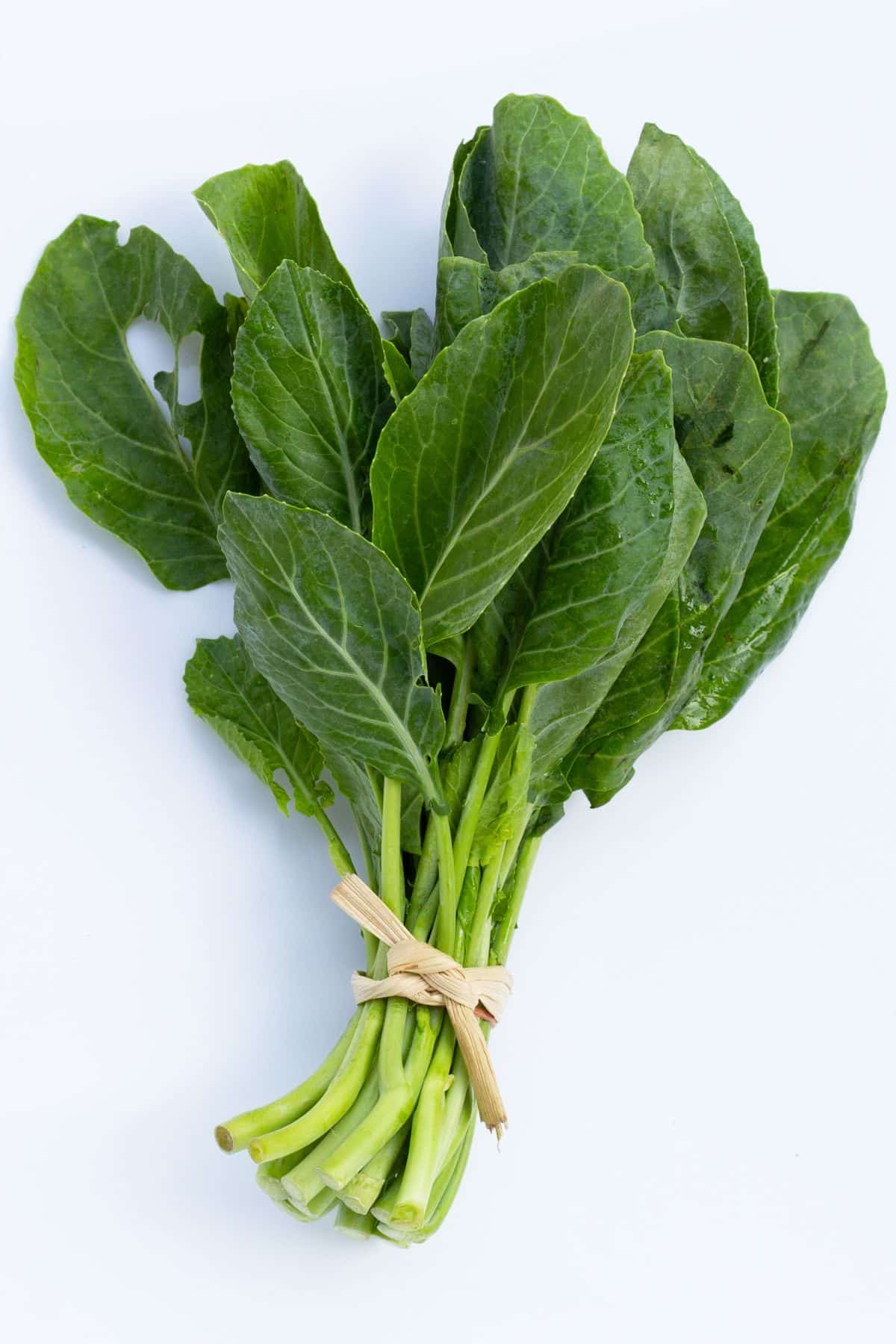
Collard greens are another leafy vegetable that are a good source of vitamins A, C, and K, as well as calcium and iron.
They can be eaten cooked or raw, and they are often used in salads, stir-fries, and other dishes. While they are sometimes thought of as bitter, collard greens can be quite flavorful when cooked properly.
Swiss chard is more delicate and is typically grown as a summer or fall crop. In terms of flavor, collard greens are more bitter than Swiss chard.
To substitute one cup of chopped Swiss chard, use one cup of chopped collard greens.
3. Spinach
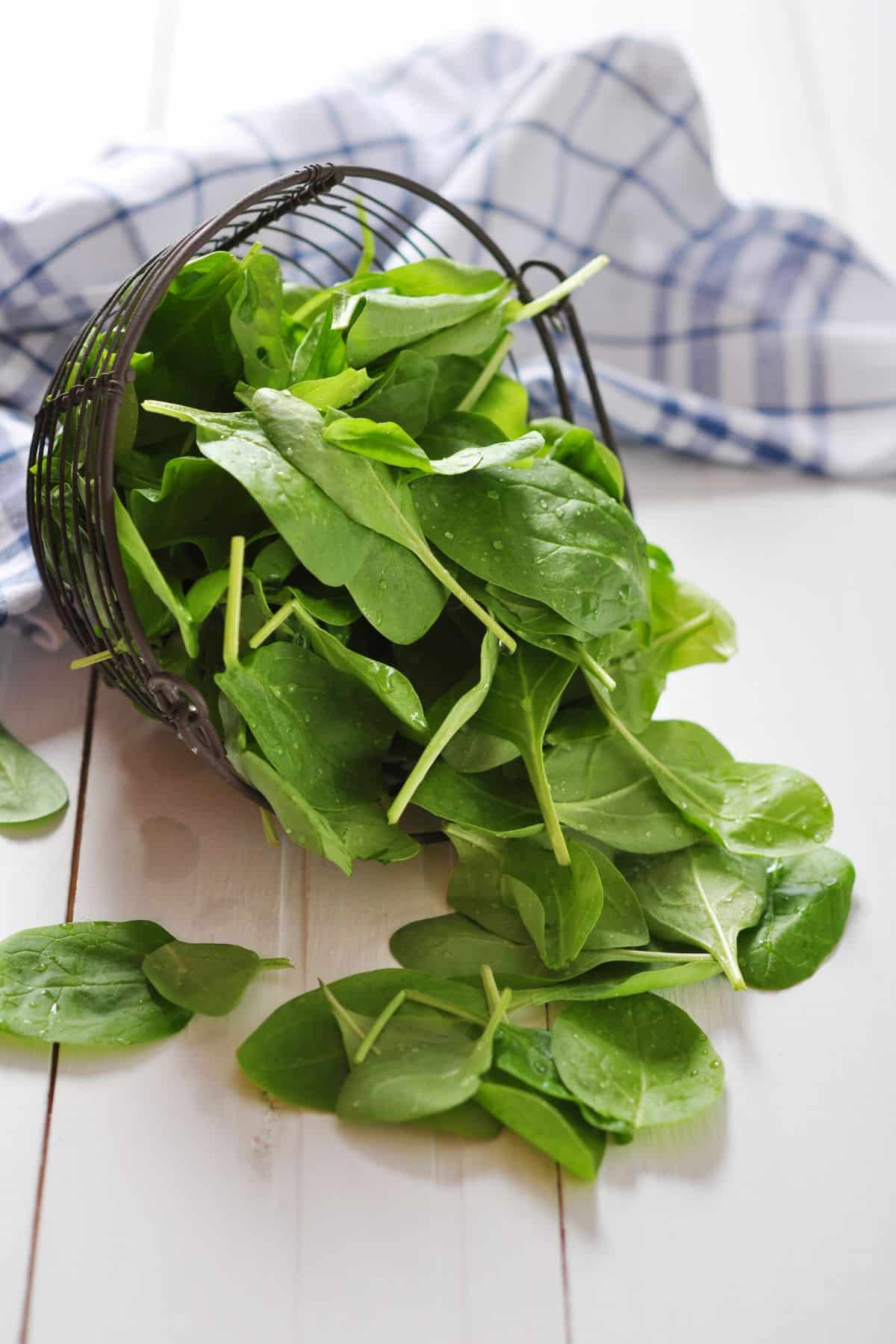
Spinach is a leafy green vegetable that is rich in vitamins and minerals. It is an excellent source of vitamins A, C, and K, as well as folate and iron.
Spinach can be enjoyed cooked or raw. When selecting spinach, look for leaves that are deep green and free from wilting or browning.
In terms of taste, spinach has a milder flavor than Swiss chard, which some people find more bitter. When it comes to texture, mature spinach is more delicate than Swiss chard, which has slightly tougher leaves.
To substitute one cup of chopped Swiss chard, use one cup of chopped spinach.
4. Beet greens
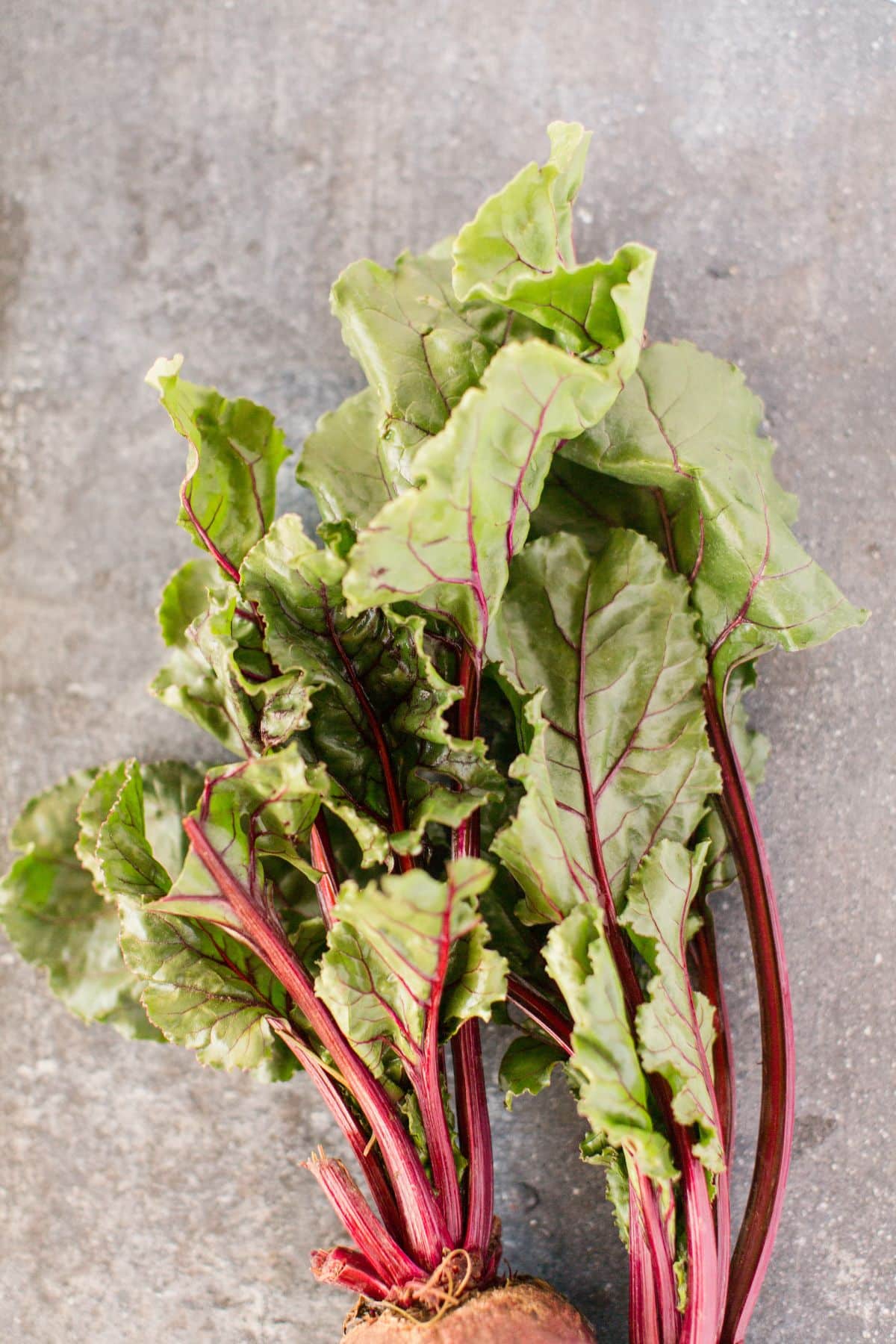
Beet greens are an excellent source of vitamins A and C, as well as potassium and calcium.
Beet greens can be steamed, sautéed, or used in soups or salads. They are best when they are lightly cooked and still have some crunch to them. Adding a squeeze of lemon juice or vinegar can help to brighten their flavor.
Swiss chard is generally milder in flavor than beet greens, which can be quite bitter but with a similar taste. Swiss chard also has higher water content, making it more tender.
To substitute one cup of chopped Swiss chard, use one cup of chopped beet greens.
5. Bok choy
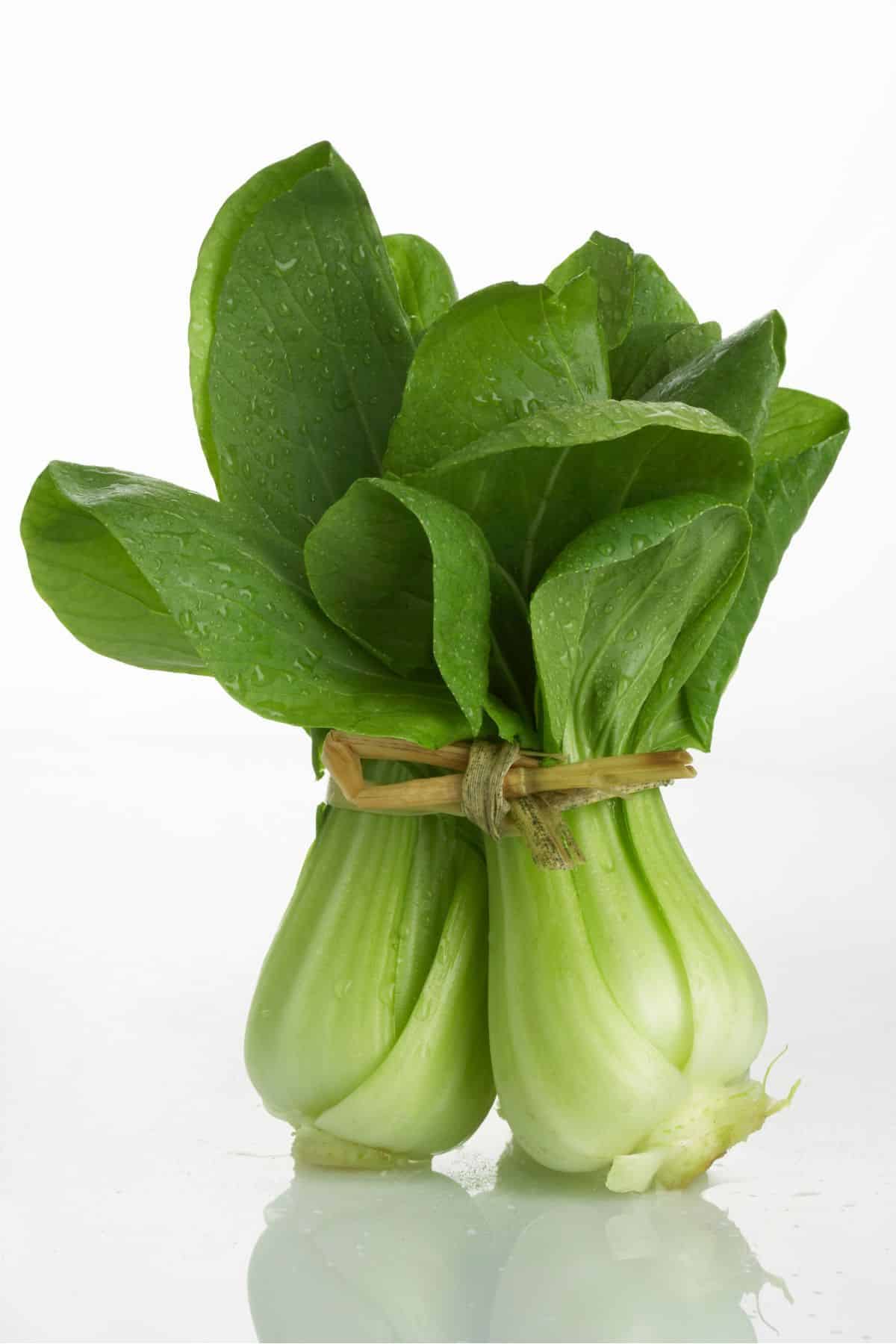
This tall green and white Asian cabbage has a crisp texture and a slightly sweet flavor, and it can be eaten raw or cooked. Bok choy is an excellent source of vitamins A, C, and K while also containing a good amount of folate.
Wash the greens thoroughly before cooking. Bok choy can be steamed, stir-fried, or added to soups or stews. It has a mild taste and is a good substitute for Swiss chard.
Because Bok choy is a type of cabbage, it has thick and crunchy leaves. Swiss chard, on the other hand, has softer leaves and a sweeter flavor.
To substitute one cup of chopped Swiss chard, use one cup of chopped Bok choy.
6. Green cabbage
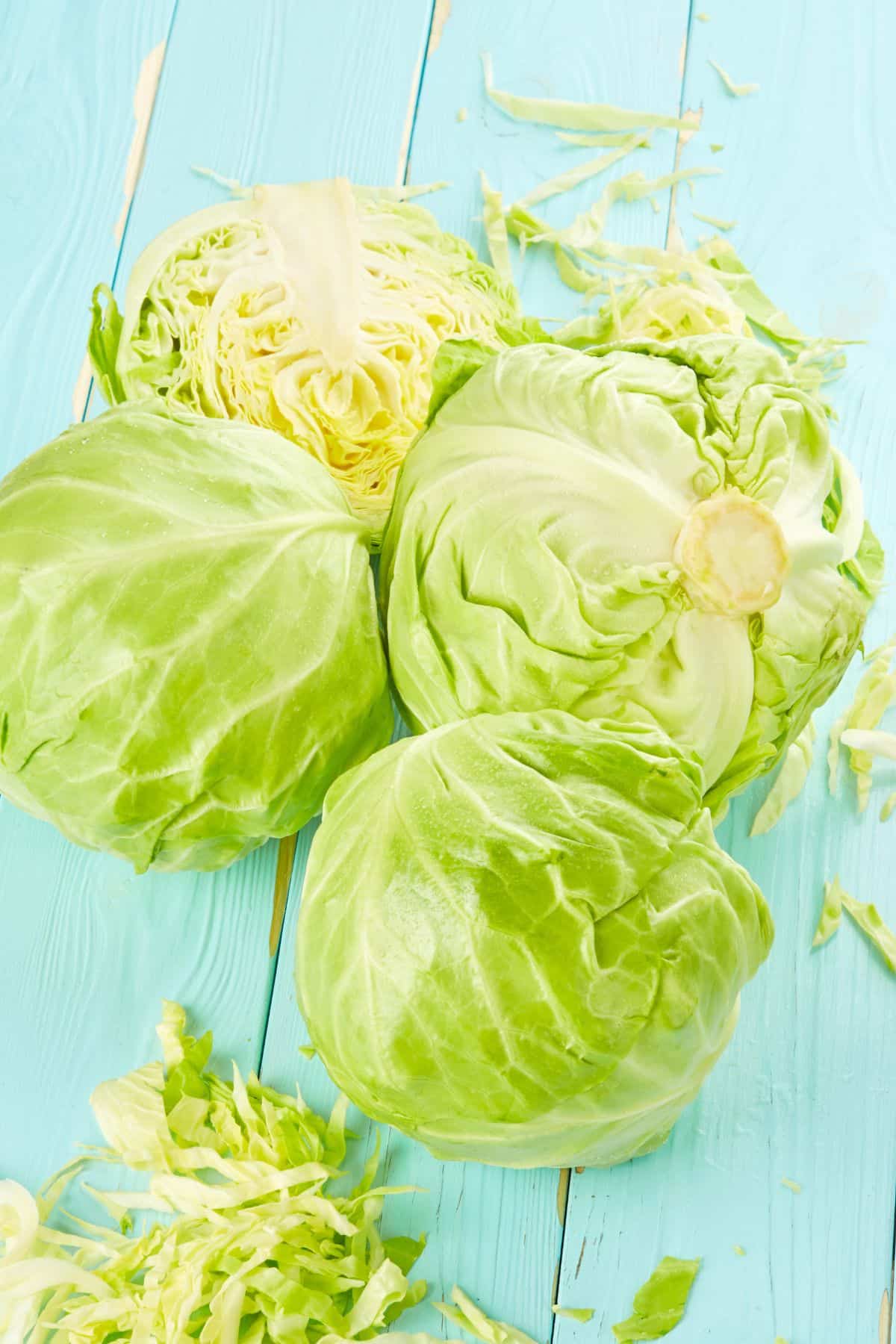
Cabbage can be used in a variety of dishes, from salads and slaws to soups and stir-fries. It is also an excellent source of vitamins and minerals, including vitamins C, K, and potassium.
When choosing a cabbage, look for one that is heavy for its size and has crisp, brightly colored leaves.
Cabbage has a milder flavor, while Swiss chard has a slightly bitter taste. Cabbage is also crunchier and has more stalks, while Swiss chard is more tender with fewer stalks. It’s a good choice if you can’t find chard.
To substitute one cup of chopped Swiss chard, use one cup of chopped green cabbage.
7. Napa cabbage
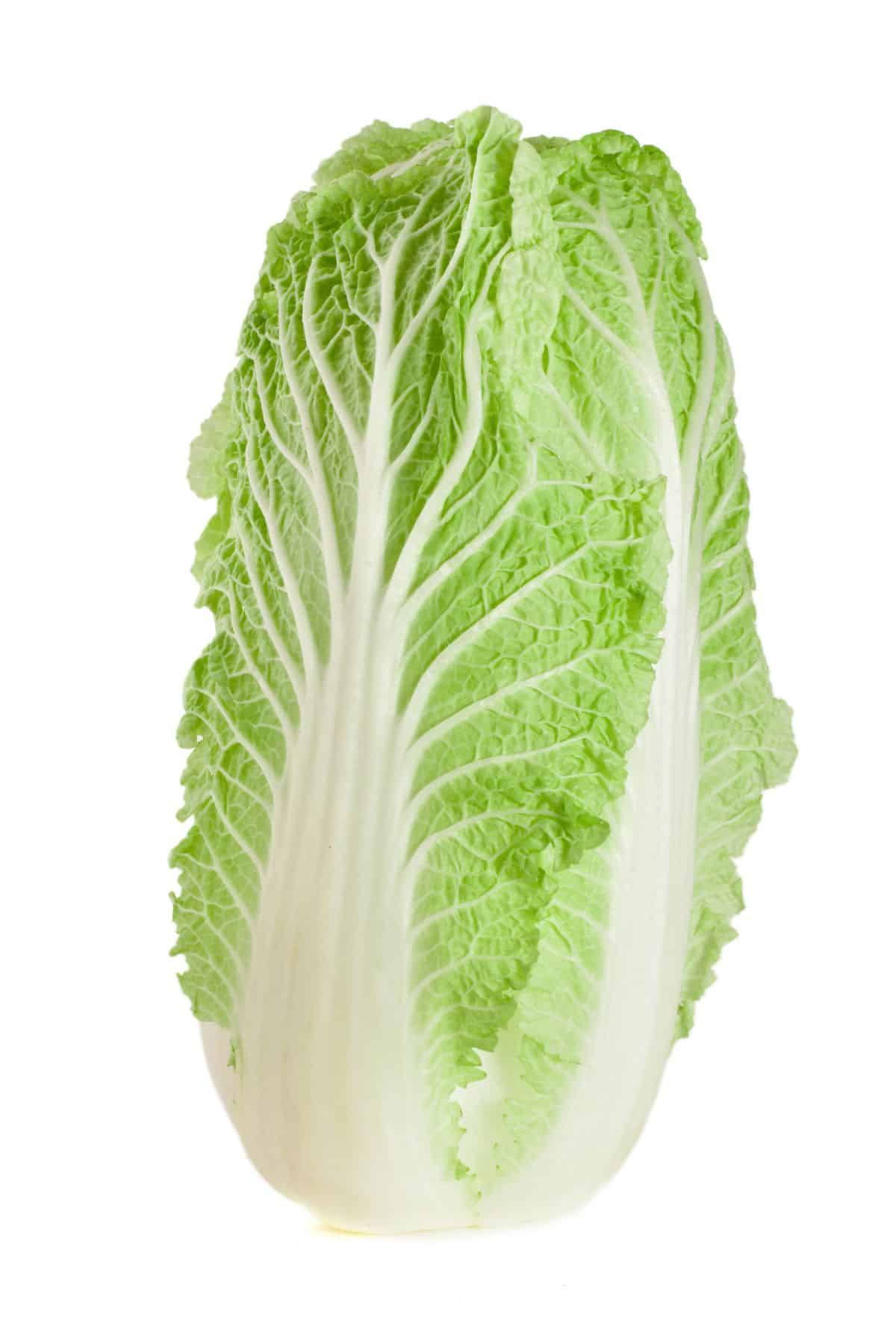
This Asian cabbage has a mild, slightly peppery flavor and a crisp texture.
Napa cabbage can be eaten raw or cooked, and is commonly used in salads, slaws, and stir-fries. It is also the key ingredient in kimchi, a traditional Korean dish made from fermented cabbage. Napa cabbage is an excellent source of vitamin B and folate.
Though delicious, Swiss chard contains more vitamins and minerals than Napa cabbage. In addition, Swiss chard is a good source of fiber, while Napa cabbage is less so.
To substitute one cup of chopped Swiss chard, use one cup of chopped napa cabbage.
8. Mustard greens
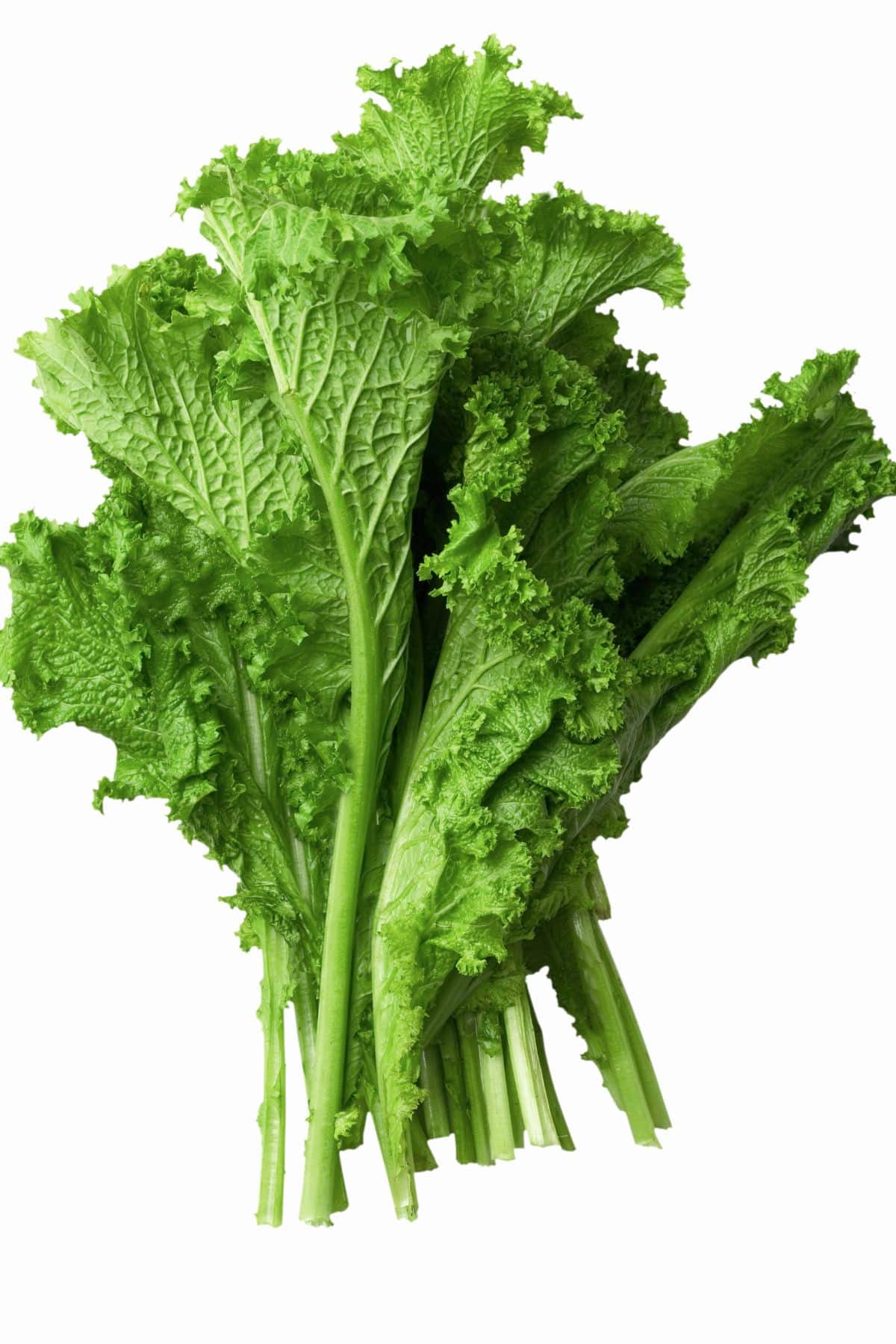
Mustard greens are a leafy green vegetable that is closely related to cabbage and broccoli. The leaves have a slightly bitter flavor and can be eaten raw or cooked.
Mustard greens are a good source of vitamins B, C, and K, as well as calcium and magnesium. They can be enjoyed in a variety of ways, including being used as a salad green, sautéed, or added to soup or stir-fry.
Mustard greens have a much stronger peppery flavor than Swiss chard, and they are also more pungent. Swiss chard is sweeter and more delicate in flavor. In terms of texture, mustard greens tend to be more tender than Swiss chard.
To substitute one cup of chopped Swiss chard, use one cup of chopped mustard greens.
9. Arugula
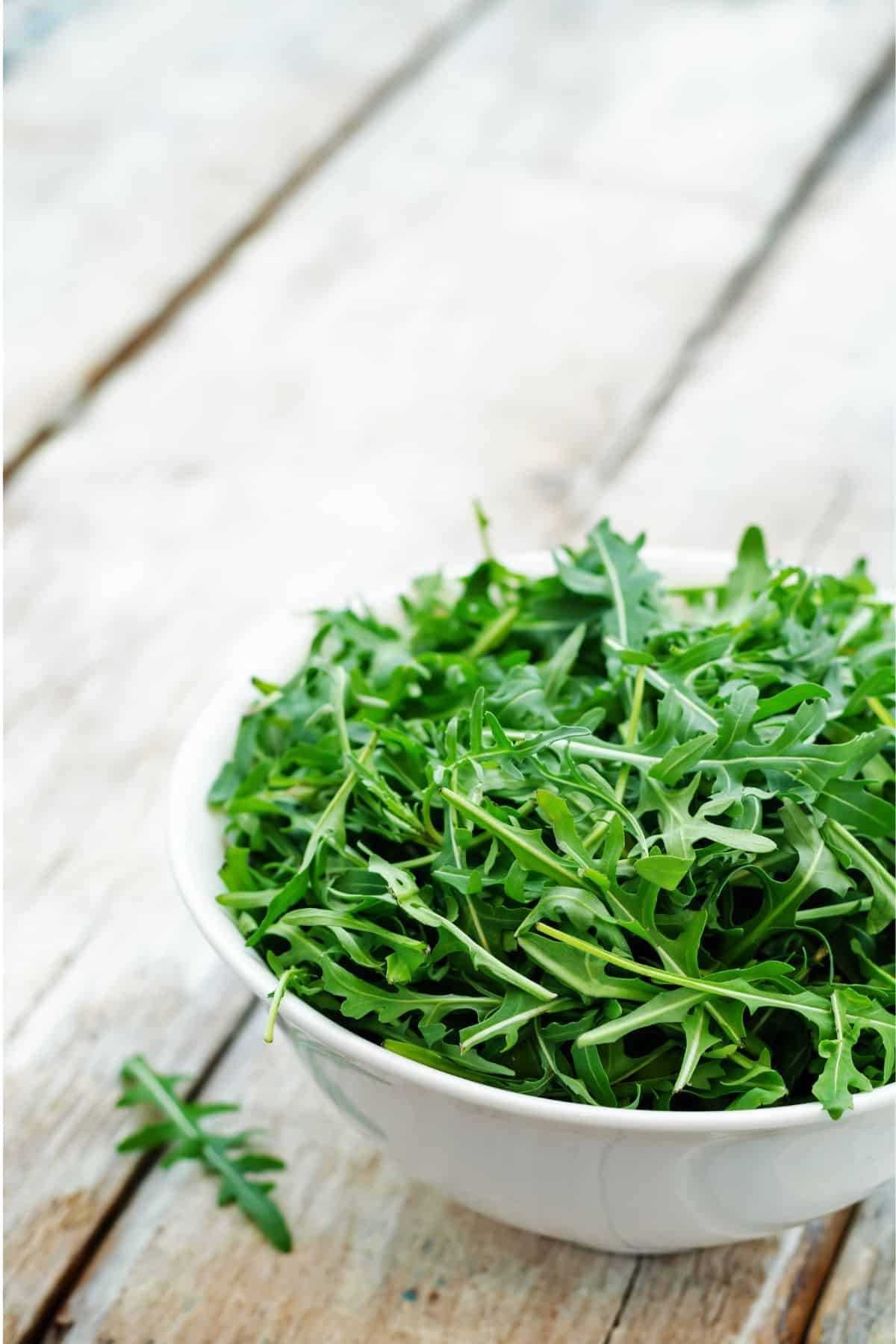
Arugula’s nutty flavor pairs well with sharp cheeses like Parmesan, and its peppery bite is a perfect complement to roasted meats. Arugula can also be used as a base for salads, or simply enjoyed on its own as a light side dish.
Arugula has a more intense flavor than Swiss chard. It’s also slightly more bitter. If you’re looking for a milder flavor, go with Swiss chard, but if you’re in the mood for something with a little bit of kick, reach for the arugula.
To substitute one cup of chopped Swiss chard, use one cup of chopped arugula.
Bonus Recommendations
In addition to the options listed above, you can also substitute other green vegetables for Swiss chard including turnip greens, dandelion greens, and others. It all depends on what is available to you and what best alternatives you have on hand.
Pros and Cons
Here’s a chart summarizing the pros and cons of substituting for Swiss chard.
| Substitute | Pros | Cons |
|---|---|---|
| Kale | High in nutrients; versatile in cooking. | Tougher texture requires longer cooking times. |
| Collard Greens | Nutrient-rich; holds up well in slow-cooked dishes. | Bitter flavor might require seasoning adjustments. |
| Spinach | Easy to cook; delicate texture works well raw or cooked. | Wilts down significantly, which may require more volume. |
| Beet Greens | Rich in nutrients; good in both raw and cooked forms. | Slightly bitter flavor might not appeal to everyone. |
| Bok Choy | Crunchy texture; sweet flavor; versatile in Asian dishes. | Distinct flavor may not blend well in all recipes. |
| Green Cabbage | Widely available; very versatile in many dishes. | May be too crunchy or bland without adequate seasoning. |
| Napa Cabbage | Mild flavor; great in stir-fries and raw dishes. | Less nutritious compared to other greens. |
| Mustard Greens | Adds a peppery kick to dishes; nutrient-dense. | Intense flavor may overpower mild dishes. |
| Arugula | Strong flavor enhances dishes; nutrient-rich. | May be too bitter or peppery for some preferences. |
More Articles About Substituting Ingredients
Conclusions
Swiss chard is a nutritious, flavorful leafy green that can be used in a variety of dishes. If Swiss Chard isn’t available, several other greens make good substitutes, including kale, Bok choy, or arugula.
When substituting Swiss chard, keep in mind that some of these other greens may have a slightly different flavor or texture. Choose the best substitute based on your personal preferences and the dish you’re making.
Don’t forget to join my newsletter list to get exclusive clean eating recipes and tips. The newsletter is 100% free with no spam; unsubscribe anytime.
About the Author: Carrie Forrest has a master’s degree in public health with a specialty in nutrition. She is a top wellness and food blogger with over 5 million annual visitors to her site. Carrie has an incredible story of recovery from chronic illness and is passionate about helping other women transform their health. Send Carrie a message through her contact form.


